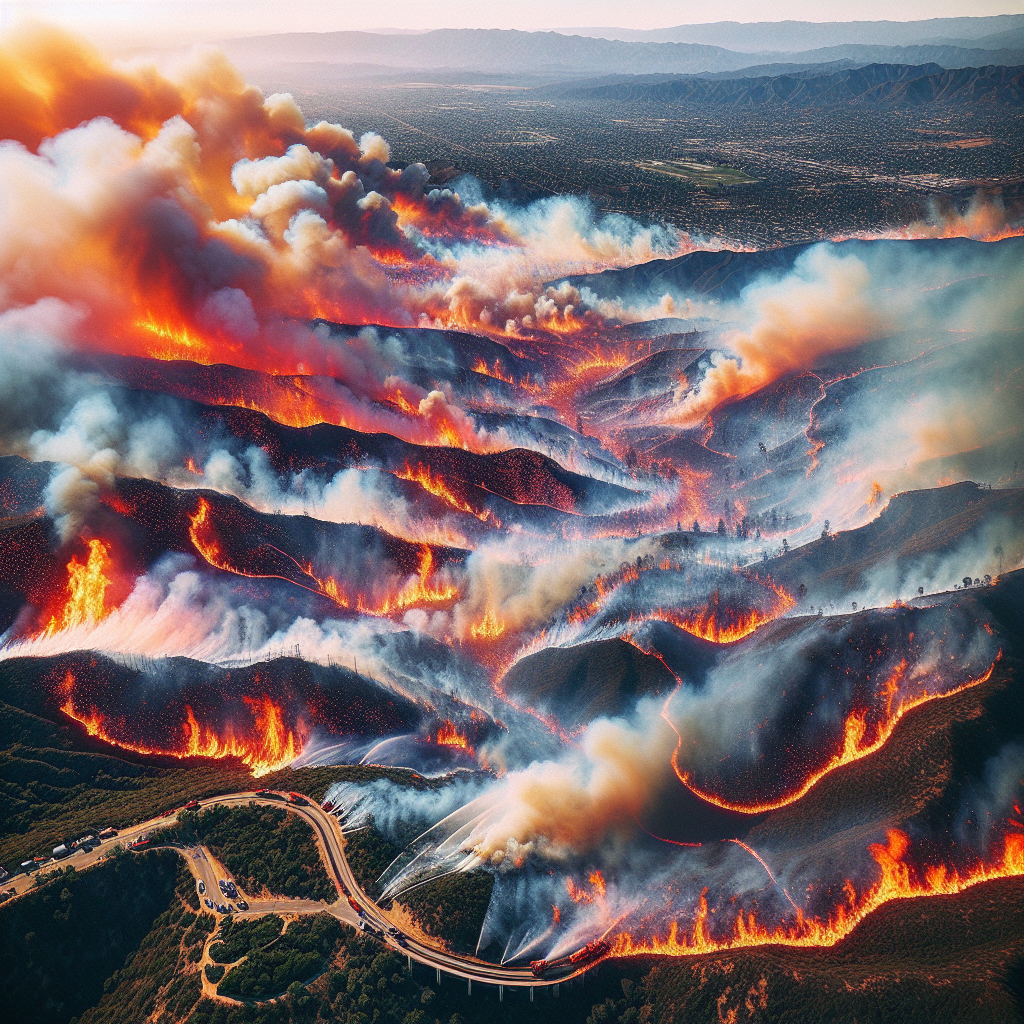January 13, 2025
Palisades Fire – A Blazing Testament to Climate Change and Extreme Weather Patterns
Book a Demo
The Palisades Fire in LA County, California, has been a blazing testament to the impact of climate change and extreme weather patterns on our environment. Aerial images of the affected areas highlight the magnitude and severity of the firestorm, a disaster influenced by a weather phenomenon known as “hydroclimate whiplash.”
Several factors have played into the creation and propagation of the Palisades Fire. Severe Santa Ana wind events, land use patterns, and ignition sources ranging from power lines to suspected arson have all contributed to the intensity and spread of the fire. Even as the winds weaken, conditions that facilitated the quick spread of the fire persist. Only a substantial amount of rainfall could potentially mitigate the situation, but such relief seems unlikely due to the current weather patterns.
Hydroclimate whiplash, a term used to describe the sudden shift from extremely wet conditions to dry weather patterns, plays a pivotal role in wildfire occurrences. This rapid change results in a significant increase in vegetation. This vegetation then dries out and become fuel for wildfires, providing an environment ripe for firestorms such as the Palisades Fire.
A recent study has shed more light on the connection between global temperature rise and the increased probability and intensity of wildfires. As the global temperature rises, the atmosphere draws more moisture from plants. This process creates more extreme fire weather conditions, increasing the likelihood of intense wildfires.
The year 2024 was reported as the hottest year on record. This unprecedented heat could be a contributing factor to the devastating fires that have plagued Los Angeles and surrounding regions. Scientists caution that increased global temperatures and unusually warm oceans are ushering in an era of intensified natural disasters. This situation is only worsened by human-induced climate change.
The Los Angeles wildfires, which are uncommon for January, serve as a stark indicator of a rising trend of extreme and unpredictable weather events. These events include devastating hurricanes such as Helene and Milton, which caused significant destruction in Appalachia.
The extreme weather patterns and resulting natural disasters are a global concern, highlighting the need for concerted efforts in combating climate change and mitigating its effects. The Palisades Fire in LA County is a grim reminder of the potential repercussions of climate change, and a call to action for us all.
Science4Data is committed to cut through greenwashing and measure real impact. Join the journey to a sustainable future. Your actions matter.



